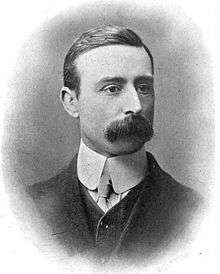H. J. R. Murray

Harold James Ruthven Murray (24 June 1868 – 16 May 1955) was an English educationalist, inspector of schools, and prominent chess historian. He was the first to publish the theory that chess originated in India.
Education
Murray, the eldest of eleven children, was born near Peckham Rye in Peckham, London. The son of Sir James Murray, the first editor of the Oxford English Dictionary, he attended school at Mill Hill and during his spare time helped his father produce the first edition of the OED. By the time Harold had finished school and was preparing to leave for university, he had been responsible for over 27,000 quotations that later appeared in the OED.
He won a place at Balliol College, Oxford where in 1890 he graduated with a first class degree in Mathematics. He became an assistant master at Queen's College, Taunton where he learned to play chess. Later he was assistant master at Carlisle Grammar School and in 1896 he became headmaster of Ormskirk Grammar School in Lancashire. On 4 January 1897 he married Miss Kate Maitland Crosthwaite. In 1901, he was appointed a school inspector and in 1928 he became a member of the board of education.
Murray was a champion of the left-handed, defending children against the attempts of schools to make them conform by using their right hand.[1]
History of chess
In 1897 he was encouraged by Baron von der Lasa (who had just completed his book on the history of European chess) to research into the further past of chess. Murray gained access to the largest chess library in the world, that of John G. White of Cleveland, Ohio, and also used the collection of J. W. Rimington Wilson in England. The White collection contained some Arabic manuscripts, so Murray learnt Arabic (in addition to his native English and German) and examined many historical chess documents. The research took him 13 years, and he contributed articles on aspects of chess history to the British Chess Magazine and the Deutsches Wochenschach in this time. In 1913 he published his most significant work, A History of Chess, proposing the theory that chess originated in India. This remains the most widely accepted theory today. (See Origins of chess.)
In 1952 Murray published A History of Board Games other than Chess. Although A History of Chess was recognised as the standard reference on the subject, its scholarly approach and great length (900 pages) made it inaccessible to most chess players. Murray began a shorter work on chess history written in a more popular style. Although begun many years earlier this work was unfinished at his death. It was completed by B. Goulding Brown and Harry Golombek and published in 1963 as A Short History of Chess.
Murray was the father of the archaeologist Kenneth Murray.
Bibliography
- A History of Chess (London: Oxford University Press, 1913)
- A History of Chess (Northampton, MA: Benjamin Press, 1985) ISBN 0-936317-01-9
- A History of Chess (New York: Skyhorse Publishing, 2012, paperback reprint of the 1913 edition) ISBN 978-1-62087-062-4
- A History of Board Games other than Chess. (1952)
- A Short History of Chess (1963, posthumously)
Unpublished works
- The Dilaram Arrangement
- The Dilaram position in European Chess
- A History of Draughts
- A History of Heyshott
- The Early History of the Knight's Tour
- The Knight's Problem
- The Classification of Knight's Tours
Most of his unpublished works are now held in the library of Oxford University.
Notes
- ↑ Brewer, Charlotte. "Katherine Maud Elisabeth Murray (1909-98)". Examining the OED. Hertford College, Oxford: Charlotte Brewer. Retrieved 30 May 2011.
References
- Brace, Edward R. (1977), An Illustrated Dictionary of Chess, Hamlyn Publishing Group, p. 194, ISBN 1-55521-394-4
- Hooper, David; Whyld, Kenneth (1992), The Oxford Companion to Chess (2nd ed.), Oxford: Oxford University Press, pp. 265–66, ISBN 0-19-280049-3
- Olson, Calvin (2006), The Chess Kings, Volume 1, Trafford, p. 157, ISBN 1-4120-3907-X (annotated bibliography)
- Sunnucks, Anne (1970), Encyclopaedia of Chess, New York: St. Martin's Press, pp. 312–13, LCCN 78106371
External links
| Wikisource has original works written by or about: Harold James Ruthven Murray |